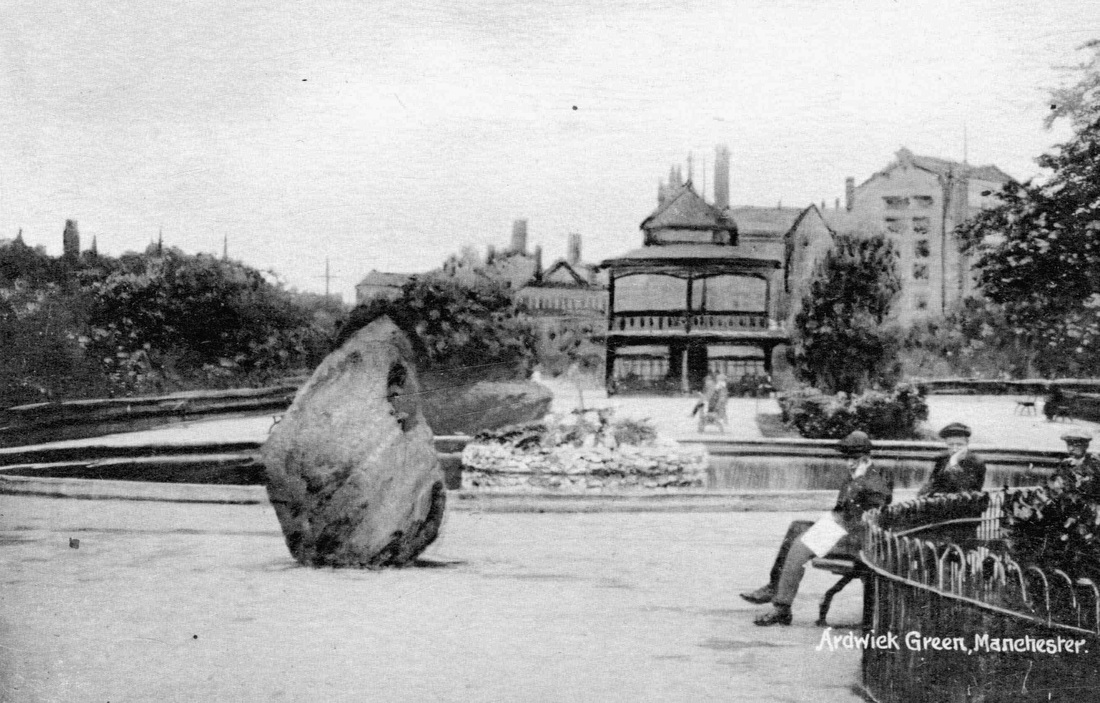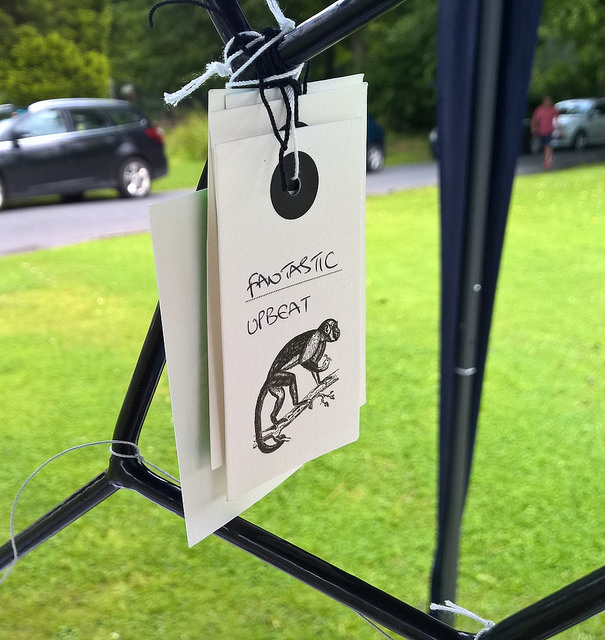|
A few years back, I worked on a three year contract supporting organisational change in a group of universities who were starting to come to terms with a then brand new agenda, where academics and researchers needed to become more outwards facing, connecting with the public on their doorstep and at large. Part of my role was to mentor internal directors and project managers, and the departments they worked with, in looking for the impact of their activities. Like many major programmes, the initiative had a quite intense, technical, formal, robust evaluation system underpinning it. Like many organisations, this was not the fun part of anyone's work, and on top of everything else going on, was not generally what most people were interested in prioritising. In my mentoring role, I wanted to increase people's confidence about being able to carry out evaluation that was realistic and meaningful, and reduce their fear of becoming overwhelmed. At the same time, some of the community groups involved had been saying their previous experiences of evaluation in university programmes had, at times, been overwhelming, invasive, and one-sided.
As a result, I created a simple, practical, set of suggestions to make evaluation do-able, useful, positive and meaningful. It simply offered these ten top tips, and five years later with the huge amount of learning I've developed about evaluation, they still absolutely stand the test of time...
0 Comments
 I am so very lucky to be able to get involved with such a wide variety of projects. In each one I love to find out about new collections, artworks, exhibits, activities and the people behind them or indeed at the receiving end. Right now I'm writing a resource pack for Curious Minds which looks at how local heritage can be used to work with schools towards an area based curriculum. The resource will include several case studies, one of which features Blackpool Illuminations. It's little known that the Illuminations have a historic archive, or that they are all designed and made in Blackpool itself, at a design and manufacture depot called Lightworks. You might like to read this excellent page about where the magic happens. Many images from the archive of illuminations artwork and some accompanying catalogue detail is available at the Illuminations blog right here. On occassion, Lightworks opens up for tours for special events and groups such as Heritage Open Days. A potted history of the illuminations is provided here. Further information is available here. Meanwhile, the Curious Minds resource, and another teaching resource produced by cultural team members of Blackpool council offering many ways to use the illuminations to support maths based learning - developed in close consultation with teachers, will all be available online to download as a pdf in due course. Image: Up for Promotion, copyright Blackpool Illuminations Collection  Image courtesy of Manchester Libraries, Information and Archives, Manchester City Council Image courtesy of Manchester Libraries, Information and Archives, Manchester City Council I've just recently started work on the evaluation of a year long programme hosted by Manchester Metropolitan University's Institute of Humanities and Social Science research. Entitled Creating Our Future Histories, the scheme sees 'early career researchers' (usually those who are completing a PhD, or are just about to start one / have recently finished one) working with Manchester community organisations. Each partnership is mentored by a more experienced academic. The partnerships are punctuated along the way by a series of weekend workshops combining into a professional development course on how community engagement between academics / researchers / communities might take shape. Each partnership is also expected to meet at least once between each workshop. The partner-groups are developing co-constructed plans and activities which research previously uncharted areas of the organisation's heritage, and look towards incorporating their future in a way which will become part of their heritage in years to come - there's the 'Future Histories' part. Late next Spring each group will showcase their findings in creative and public ways - many yet to be decided; though ideas are already circulating about film, video, exhibtions, time capsules and more. I'm about a month in and I'm once again struck by the many rich and hidden histories of Manchester - industry, architecture, battle and radical action, many many things which show the inventiveness and resilience of this sometimes bloody minded and often ingenius city. You can find out more about the project here and I particularly recommend the research group pages and project blogs to find out more about the organisations involved and the progress and reflections taking place. I spent a huge amount of last year working with some amazing academic staff, researchers and community groups as they learned more about one another through creative projects as part of the Manchester Beacon for Public Engagement. My role was (and still is) to help what's happening at practice level link with a rather complex overarching evaluation framework. The Manchester Beacon programme is, in a nutshell, about encouraging learning institutions to better understand how to open themselves up to communities more effectively. An important part of that process is to trial new approaches and reflect on what works, or what could be improved. It's an action learning model really. The Beacon team and I identified that those involved in the practice needed support in being able to report back on their work in ways that fit the evaluation framework. So we set about producing some guidance for them, based on the input of community groups and a pilot cohort of academics and researchers. Fast forward many months and the evaluation guidance pack / toolkit I created with their help, and the help of other colleagues, is now freely available. It contains some basic principles of evaluation, hints and tips, templates, and examples of creative consultation. You can read or download it below; contact me for a copy; or read / download it here. On this page, you can also find some very short podcasts and top tips from some of the staff and community groups who have used the document. At the end of the pack there are also lots more links to further evaluation guidance in public engagement and also support created specifically for the fields of science communication; community engagement; arts and heritage; and health and wellbeing. All thoughts or comments welcome... I currently have a number of clients who, in some shape or form, are involved in being part of museums who are trying to become better friends with their communities. In order to be able to assist them in this as well as I can, and refresh my own thinking on the topic, I assembled a quick list of everything I ever knew about this sort of work - what to look out for, what to do, what not to do. I then sent a call out to all the lovely and helpful members of the GEM email list to see what insights they had on the same theme. Three months later I've finally collated it all under sub-headings and here it is; a short paper on things to be aware of if you're a museum working with local communities. In fact I'm sure much of it will be transferable to other types of organisations. I would especially like to thank everyone who did respond to the GEM email request, and sent me all sorts of papers, reports, observations, anecdotes and ponderings, particularly those who trusted me enough with what, in some cases, were quite hard lessons for their organisations to learn. I'd very much like the discussion to keep flowing so please do add comments, or include links to other relevant papers, reports etc below... 04.03.11 update... for the few people who let me know they haven't been able to see or save the document below - it's now also available as a straight forward pdf to read or download here or drop me a line via the comments pageand I'll happily email it to you |
Details
...BlogI'm most interested in how the public, your public, whoever that may be, engages with culture and creativity.
And if it nurtures creativity and develops personal, social or professional skills I'm absolutely all ears. Categories
All
Archives
May 2023
|



 RSS Feed
RSS Feed
